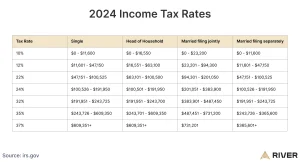Learning about mutual funds is an excellent way to gain an understanding of the benefits and risks of investing. This is especially true for first-time investors who may want to consider a mutual fund as their first investment. However, they may be unsure where to begin. Fortunately, there are many resources that can help.
To learn more about mutual funds, start by considering your investment style. Do you want to invest in a lump-sum amount or through a system of subscription payments? You should also consider how much risk you are comfortable with. High-risk funds offer the best returns, while low-risk funds have lower returns.
You should know that the returns of a mutual fund depend on the market value of securities in the fund. This value is called the NAV and fluctuates daily. This is especially true for equity mutual funds, which are more volatile. Another way to invest in a mutual fund is through a systematic investment plan (SIP). This type of investment is primarily used to lower the average cost of an investment while generating maximum returns.
Mutual funds can be classified as open-end or closed-end. Open-end funds can be further subdivided into no-load and load funds. Load funds charge a sales commission when investors purchase their shares, while no-load funds don’t charge this. In addition, load funds charge a small percentage of the NAV when an investor exits the fund.
When you invest in a mutual fund, you are investing money in a pool with many other people. A professional portfolio manager manages the money for you and invests it according to a set of strategies. These strategies are defined in a prospectus, which outlines the investment objectives and strategies of the fund.
Mutual funds are a great way to diversify your investments and build wealth. They are often a default choice for retirement plans. They pool the money of many similar investors and invest it in a professionally managed portfolio of publicly traded securities. Mutual funds also provide a means to redeem units and withdraw funds whenever needed.
Mutual funds have several different types and structures. Some are open-end, while others are closed-end funds. They have different rules, but all of them must meet certain requirements to be sold in different countries. Generally, they can be sold throughout the European Union. In addition, UCITS funds are available to investors in any of these countries.
Mutual funds carry many fees, including management fees and brokerage commissions. These expenses will reduce your returns, so you may want to make sure you understand all these costs before investing. Investments in mutual funds may not be suitable for everyone. You should also check the turnover ratio of the fund you are considering. If it is high, the fund will cost you more money than funds with low turnover ratios.
A mutual fund needs to generate cash flow to continue operating. Some of them pay regular dividends to investors. These payments are reinvested into more shares or paid out in cash. Dividends may not match your personal returns, but the income generated from these funds serves as a buffer against the volatility of the equity market.







More Stories
Your Financial Co-Pilot is Here: How AI is Reshaping Personal Finance
The Importance of Sector Rotation in Seasonal Investing
Understanding the Importance of Insurance Planning